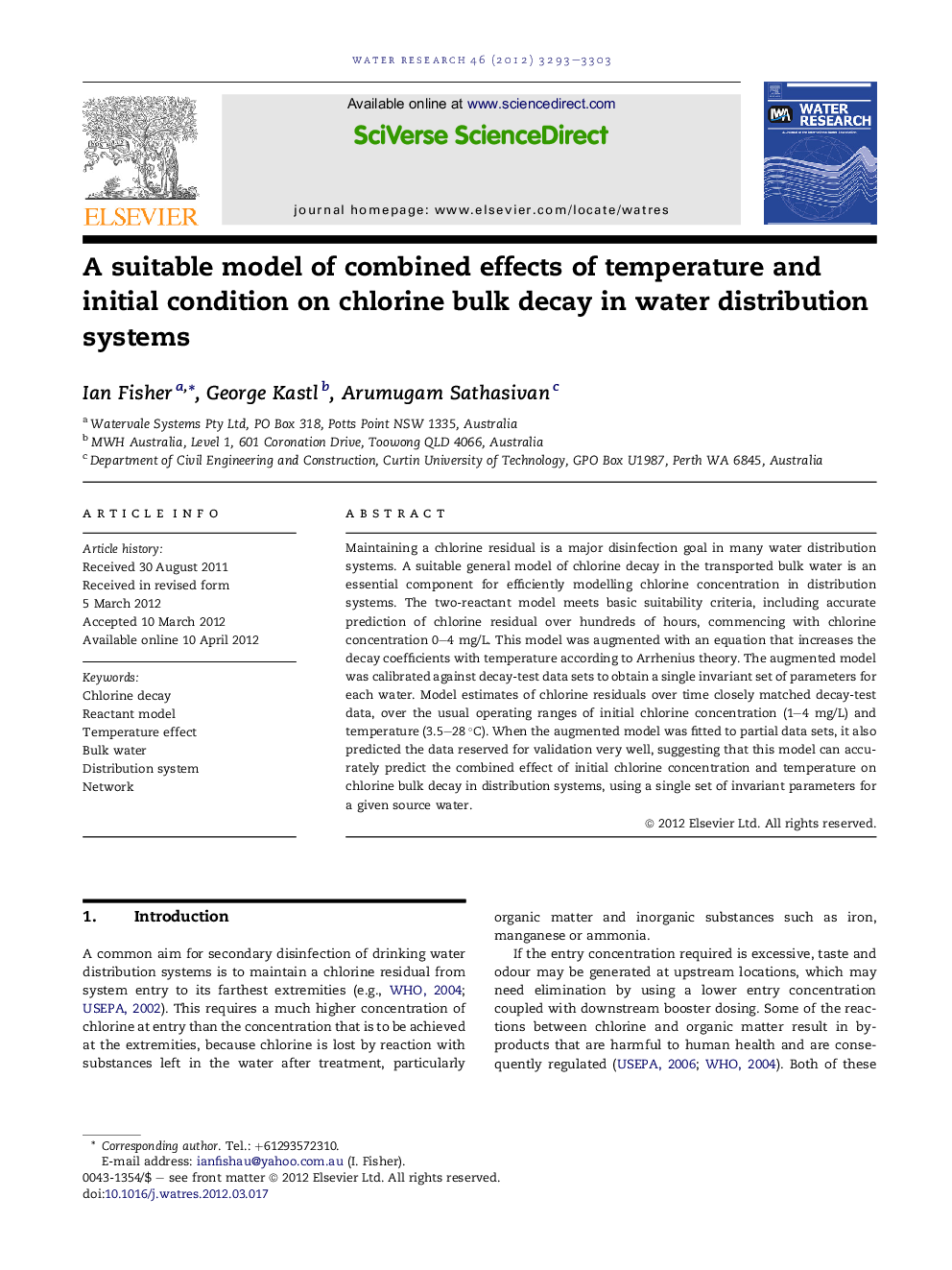| Article ID | Journal | Published Year | Pages | File Type |
|---|---|---|---|---|
| 4483345 | Water Research | 2012 | 11 Pages |
Maintaining a chlorine residual is a major disinfection goal in many water distribution systems. A suitable general model of chlorine decay in the transported bulk water is an essential component for efficiently modelling chlorine concentration in distribution systems. The two-reactant model meets basic suitability criteria, including accurate prediction of chlorine residual over hundreds of hours, commencing with chlorine concentration 0–4 mg/L. This model was augmented with an equation that increases the decay coefficients with temperature according to Arrhenius theory. The augmented model was calibrated against decay-test data sets to obtain a single invariant set of parameters for each water. Model estimates of chlorine residuals over time closely matched decay-test data, over the usual operating ranges of initial chlorine concentration (1–4 mg/L) and temperature (3.5–28 °C). When the augmented model was fitted to partial data sets, it also predicted the data reserved for validation very well, suggesting that this model can accurately predict the combined effect of initial chlorine concentration and temperature on chlorine bulk decay in distribution systems, using a single set of invariant parameters for a given source water.
Graphical abstractTwo-reactant model representation (curves) of data (points) from chlorine decay tests conducted at different temperatures and initial doses.Figure optionsDownload full-size imageDownload high-quality image (151 K)Download as PowerPoint slideHighlights► A two-reactant model described temperature and initial dose effects on chlorine decay. ► The two-reactant model was rigorously validated against data from three waters. ► A single set of invariant parameters was used to describe both effects in each water. ► The model explained more than 98% of the variance in each decay-test data set.
